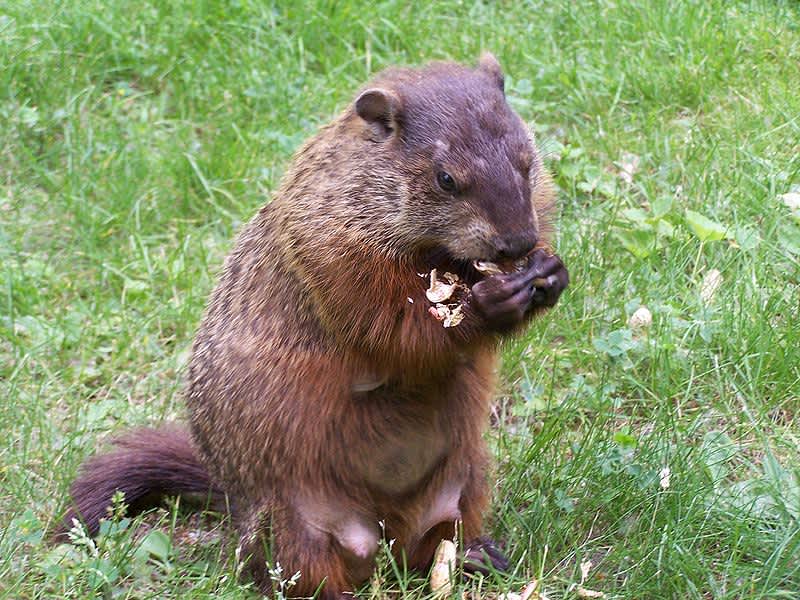Two Chucks with One Stone: Controlling Groundhog Populations Make for Good Hunting Practice
OutdoorHub Reporters 08.22.13

Groundhogs do much more than predict each winter’s expiration date, they are also excellent burrowers and can move more than 5,000 pounds of dirt in digging a burrow. While this may have positive side effects for other subterranean animals, groundhog burrows can spell disaster for farms by damaging agricultural equipment or even threatening structures. The animals themselves are also extremely damaging to crops, far more so than whitetail deer. Because of this, many farmers hunt and trap groundhogs whenever they can in order to control the population.
“I once broke two baler axles off by hitting a groundhog’s hole,” Pennsylvania farmer Wade Kramer told the Pittsburgh Tribune-Review. “And I wasn’t going very fast. You’re only doing a couple of miles an hour when baling, but hit a hole and your equipment can break off.”
However, hunters may find these creatures good practice, especially for young sportsmen. Groundhogs mature quickly and produce a litter of four young per year. Adaptability and keen survival instincts ensure that groundhog populations across the country are dense, sometimes as many as seven per acre.
“It’s amazing,” said Walt Kotecki, who hunts on Kramer’s farm. “I’ll hunt them all summer, and by fall you think you’ve killed them all because they’re hard to find. But then come spring it’s, ‘There’s one, there’s one, there’s one,’ ”
Groundhog, or woodchuck, hunting regulations are often lax and seasons stretch year-round with the appropriate small game license, depending on state. In addition, Many farmers are eager to allow hunters on their property for the purpose of hunting groundhogs.
“I don’t think I’ve met a farmer yet who wouldn’t welcome somebody to shoot groundhogs,” said John Bennett, president of the Armstrong County Farm Bureau. “They’re a real nuisance.”
Farmland with groundhog damage will show visible signs of burrowing and feeding. Areas close to groundhog dens are often dominated by weeds, which take root in places cleared of crops. These telltale signs let hunters know if there’s plenty of game around.
“It’s a good pastime. It gets me out in nature,” he said. “And one of the real benefits to helping farmers out is that you’re often given permission to come back to the farm and hunt deer or other things.”
Despite being on the menu year-round, groundhogs will go into hibernation during winter in specialized burrows.

